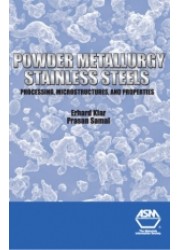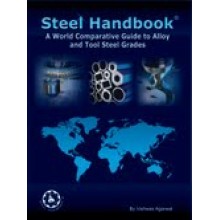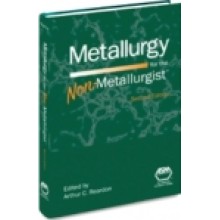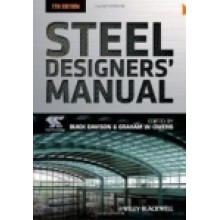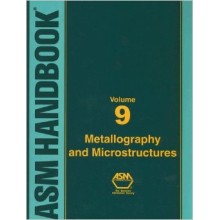Powder Metallurgy Stainless Steels: Processing, Microstructures, and Properties
ISBN: 9780871708489
Author: Erhard Klar, Prasan K. Sama
Dispatch Time: 2 - 3 Days
Quantity:
-
Add to Compare
Progress in the understanding of corrosion and corrosion resistance properties of sintered stainless steels has lead to new applications that benefit from net shape processing and more efficient material utilization. The text, extensive graphics, and tabular summaries provide a comprehensive reference to obtain good corrosion resistance properties of sintered stainless steels with careful processing, starting with powder selection, avoidance of contamination, efficient delubrication, and controlled sintering and cooling. Misconceptions and conflicting literature are critically assessed.
Features :
Preface
Acknowledgement
About the Editors
Chapter 1 Introduction
1.1 Historical Background
1.2 Present State and Scope
Chapter 2 Metallurgy and Alloy Compositions
2.1 Introduction
2.2 Identification and Specification
2.3 Basic Metallurgical Principles
2.4 Characteristics and Chemical Compositions of Wrought and PM Stainless Steels
2.4.1 Ferritic Grades
2.4.2 Austenitic Grades
2.4.3 Martensitic Grades
2.4.4 Duplex and Precipition-Hardening Grades
2.5 MIM Grades
Chapter 3 Manfacture and Characteristics of Stainless Steel Powders
3.1 Water Atomization of Stainless Steel Powders
3.1.1 Brief Process Description
3.1.2 Physical Powder Characteristics
3.1.3 Chemical Powder Characteristics
3.1.4 Raw Materials and Melting
3.1.5 Automization
3.2 Gas Atomization of Stainless Steel Powders
3.3 Drying,Screening,Annealing,and Lubrication
3.4 Contamination,Copper sulfate and Ferroxyl Tests
Chapter 4 Compacting and Shaping
4.1 Rigid Die Compaction
4.1.1 Basics of Powder Compaction and Tooling
4.1.2 Compaction of Stainless Steel Powders
4.1.3 Dimensional Change
4.2 Powder Injection Moldinng of Stainless Steel
4.2.1 Powders for MIM
4.2.2 Feedstock
4.2.3 Toolong and Molding
4.2.4 Deblinding
4.2.5 Sintering
4.2.6 Process Criteria and Design Guidelines
4.3 Extrusion of PM Stainless Steels
4.4 Hot lsostatic Pressing of Stainless Steels
Chapter 5 Sintering and Corrosion Resistance
5.1 Sintering Furnaces and Atmospheres
5.2 Sintering of Stainless Steels
5.2.1 Fundamental Relationships
5.2.2 Effect of Sintered Density on Corrosion Resistance
5.2.3 Sintering of Stainless Steel in Hydrogen
5.2.4 Sintering of Stainless Steels in Hydrogen-Nitrogen Gas Mixtures
5.2.5 Sintering of Stainless Steel in Vacuum
5.3 Liquid-Phase Sintering of Stainless steels
Chapter 6 Alloying Elements,Optimal Sintering,and Surface Modification in PM Stainless Steels
6.1 Alloying
6.2 Optimal Sintering
6.3 Surface-Modified Stainless steels
Chapter 7 Mechanical Properties
7.1 Strengthening Mechanism in Stainless Steels
7.2 Factors Affecting Mechanical Properties of PM Stainless Steels
7.2.1 Porosity
7.2.2 Sintering Atmosphere and Interstitial Content
7.2.3 Sintering Temperature and Time
7.2.4 Thermal History and Cold Work
7.3 echanical Property Standards
7.4 Room-Temperature Mechanical Properties
7.4.1 Static Mechanical Properties
7.4.2 Fatigue Properties
7.5 Elevated-Temperature Mechancial Properties
7.5.1 Static Mechanical Properties
7.5.2 Creep and Stress-Rupture Properties
7.6 Mechanical Properites of Metal Injection Molded Stainless SteelsChapter 8 Magnetic and Physical Properties
8.1 Fundamental Relationships
8.2 Powder Metallurgy Magnetic Materials
8.2.1 Effect of Density and Morphology
8.2.2 Application of PM Soft Magnetic Materials
8.2.3 Powder Metallurgy Stainless Steels
8.3 Physical Properties
8.3.1 Physical Properties of Wrought Stainless Steels
8.3.2 Physical Properties of PM Stainless Steels
Chapter 9 Corrosion Testing and Performance
9.1 Corrosion-Resistance Testing and Evaluation
9.1.1 Immersion Testing
9.1.2 Salt Spray Tests
9.1.3 Electrochemical Tests
9.1.4 Ferric Chloride and Ferroxyl Tests
9.1.5 Elevated-Temperature Oxidation Resistance
9.2 Corrosion Data of Sintered Stainless Steels
Chapter 10 Secondary Operations
10.1 Machining
10.1.1 Machinability of Wrought and PM Stainless steels
10.1.2 Factors affecting Machinability of PM Stainless Steels
10.2 Welding
10.2.1 Basics of Welding Stainless Steels
10.2.2 Welding Methods Used with PM Stainless Steels
10.2.3 Additional considerations for PM Stainless steels
10.3 Brazing
10.3.1 Basics Considerations in the Brazing of PM Stainless Steels
10.4 Sinter Bonding
10.5 Resin Impregnation
10.5.1 Methods of Impregnation
10.5.2 Benefits of Resign Impregnation
10.6 Re-Pressing and Sizing
10.7 Other surface Treatments
Chapter 11 Applications
11.1 Major Automotive Applications
11.1.1 Rearview Mirror Bracket
11.1.2 Antilock Brake Systems (ABS) Sensor Rings
11.1.3 Automotive Exhaust Systems
11.2 Stainless Steels Filters and Other Porous Stainless Steels
11.3 Metal Injection Molding
11.4 Stainless Steel Award-Winning Parts
11.5 Stainless steel Flake Pigments
Atlas of Microstructures
Powder Morphologies
Effect of Compactin Pressure on Porosity
Austenitic Stainless steels
Ferritic Stainless Steels
Oxides in Sintered Stainless Steels
Carbides in Sintered Stainless Steels
Nitrides in Sintered Stainless Steels
Corrosion of PM Stainless Steels
Fractographs of PM Stainless Steel
Appendix 1: 300-Series PM Stainless Steels
Appendix 2: 400-Series PM Stainless Steels
Appendix 3: Brief Glossary of Terms
Write a review
Your Name:Your Review: Note: HTML is not translated!
Rating: Bad Good
Enter the code in the box below:
Copyright © 2014 Engineering Standards Bureau. All Rights Reserved.
Developed By Zoom Into Web


